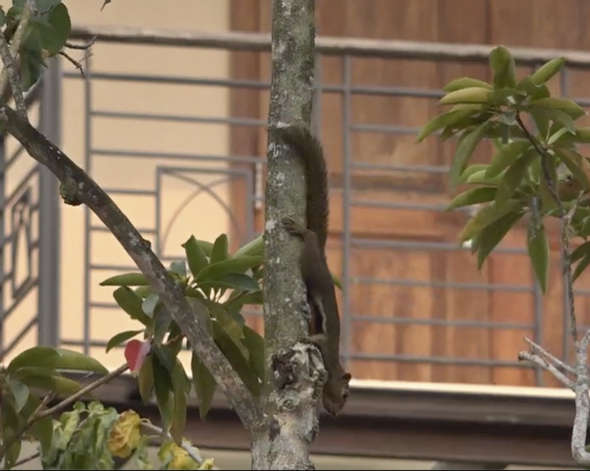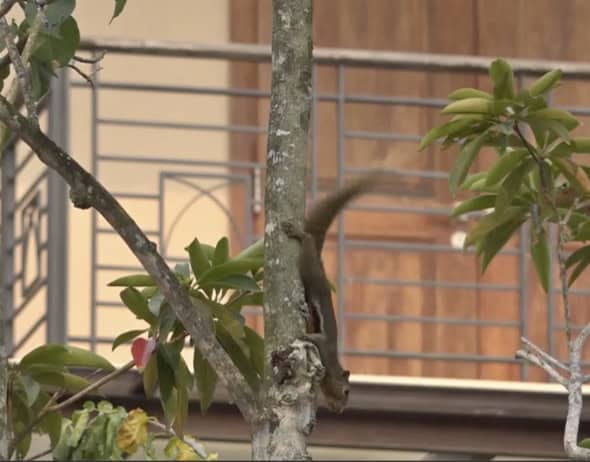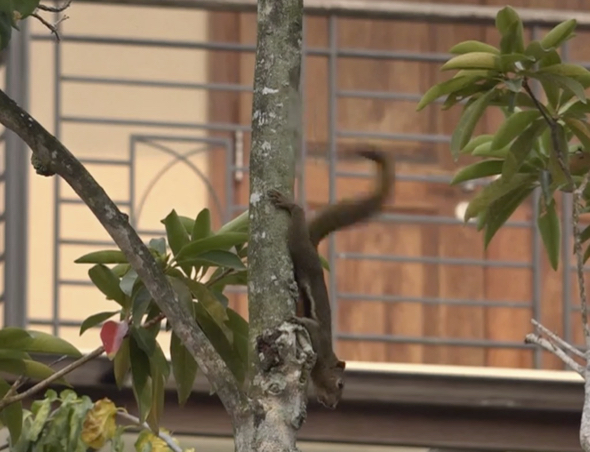Plantain Squirrels (Callosciurus notatus) are common in Singapore’s urban gardens, feeding on flower nectar, fruits, figs, palm shoots and even birdlings.
When danger lurks, as when a Reticulated Python is nearby, it gives out its characteristic call LINK.
This squirrel, resting on a trunk of a wayside tree, was heard making the same call. However, no predator was seen nearby (see video below).
As it calls, it flicks its tail up and down. This flicking may carry a message as from where the predator is coming from. Vocalisation may be used to warn off the predator or to alert the predator’s presence. Tail flicking and vocalisation can also be an alarm signal.
An earlier post shows the squirrel being mobbed by a bird.
YC Wee
Singapore
10th October 2019












2 Responses
Could it be that the squirrel considered you to be the predator?
The tail flicking behaviour along with characteristic shreiks is also seen when predators are sighted by the Indian palm squirrel (Funambulus palmarum) in South India and also in many members in the family Sciuridae.